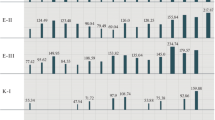Abstract
In natural populations of Drosophila melanogaster, about 10% of the individuals are infected by a virus, sigma, which is not contagious but is transmitted through gametes. These populations are also regularly polymorphic for two alleles, O and P, of a locus ref(2)P; the P allele interferes with the multiplication of the virus. Two viral Types are found in populations, differing in their sensitivity to the P allele. Many samples of flies have been collected in different parts of the world and for each of them, the P frequency has been measured and the viral Type determined. A clear geographical differentiation appears for both these traits; they present a mutual adaptation leading to relatively low frequencies of infected flies in natural populations. Most viruses are only known from highly selected laboratory strains. The observations reported in this paper give evidence of the self restraint exercised by the sigma virus at the population level; they indicate that the characteristics of wild viral clones are likely to differ from those of laboratory strains and also from one population to another.
The sigma virus is comparable to other genetical elements, that can be more efficiently transmitted than a mendelian allele, such as transposable elements. The discussion illustrates some of the factors involved in the perpetuation of such elements in a population and points out the difficulty of taking them all into consideration in theoretical models dealing with their perpetuation.
Similar content being viewed by others
References
David, J., 1959. Etude quantitative du développement de la Drosophile élevée en milieu axénique. Bull. Soc. Biol. Fr. Belg. 93: 472–505.
Fine, P. E. M., 1975. Vectors and vertical transmission: an epidemiologic perspective. Ann. N.Y. Acad. Sci. 266: 173–194.
Fleuriet, A., 1976. Presence of the hereditary Rhabdovirus sigma and polymorphism for a gene for resistance to this virus in natural populations of Drosophila melanogaster. Evolution 30: 735–739.
Fleuriet, A., 1980. Polymorphism of the hereditary sigma virus in natural populations of Drosophila melanogaster. Genetics 95: 459–465.
Fleuriet, A., 1981a. Effect of overwintering on the frequency of flies infected by the Rhabdovirus sigma in experimental populations of Drosophila melanogaster. Arch. Virol. 69: 253–260.
Fleuriet, A., 1981b. Comparison of various physiological traits in flies (Drosophila melanogaster) of wild origin, infected or uninfected by thehereditary Rhabdovirus sigma. Arch. Virol. 69: 261–272.
Fleuriet, A., 1982a. Transmission efficiency of the sigma virus in natural populations of its host, Drosophila melanogaster. Arch. Virol. 71: 155–167.
Fleuriet, A., 1982b. Factors affecting the frequency of infection by the sigma virus in experimental populations of Drosophila melanogaster. Arch. Virol. 73: 121–133.
Fleuriet, A., 1983. Influence of the population size on the frequency of flies infected by the sigma virus in populations of Drosophila melanogaster. J. Inv. Path. 42: 177–186.
Fleuriet, A. & Vazeille, M. C., 1981. Some features of samples of the hereditary Rhabdovirus sigma collected in natural populations of Drosophila melanogaster. J. gen. Virol. 56: 13–23.
Fleuriet, A. & Vazeille, M. C., 1982. On the maintenance of the polymorphism at the ref(2)P locus in populations of Drosophila melanogaster. Genetica 59: 203–210.
Gay, P., 1978. Les genes de la Drosophile qui interviennent dans la multiplication du virus sigma. Mol. gen. Genet. 159: 269–283.
Hickey, D. A., 1982. Selfish DNA: a sexually transmitted nuclear parasite. Genetics 101: 519–531.
Hickey, D. A., 1984. DNA can be a selfish parasite. Nature 311: 417–418.
L'Héritier, Ph., 1970. Drosophila viruses and their role as evolutionary factors. Evol. Biol. 4: 185–209.
Plus, N., 1954. Etude de la multiplication du virus de la sensibilité au gaz carbonique chez la Drosophile. Bull. Soc. Biol. Fr. Belg. 88: 1–46.
Rosen, L., 1981. Transmission transovarienne des arbovirus par les moustiques. Médecine Tropicale 41: 23–29.
Vazeille, M. C., 1981. Dosage des unités infectantes du virus sigma contenu dans les Drosophiles de trois populations naturelles. C. r. Acad. Sc. Paris 292: 33–35.
Author information
Authors and Affiliations
Rights and permissions
About this article
Cite this article
Fleuriet, A. Perpetuation of the hereditary sigma virus in populations of its host, Drosophila melanogaster. Geographical analysis of correlated polymorphisms. Genetica 70, 167–177 (1986). https://doi.org/10.1007/BF00122183
Received:
Accepted:
Issue Date:
DOI: https://doi.org/10.1007/BF00122183




